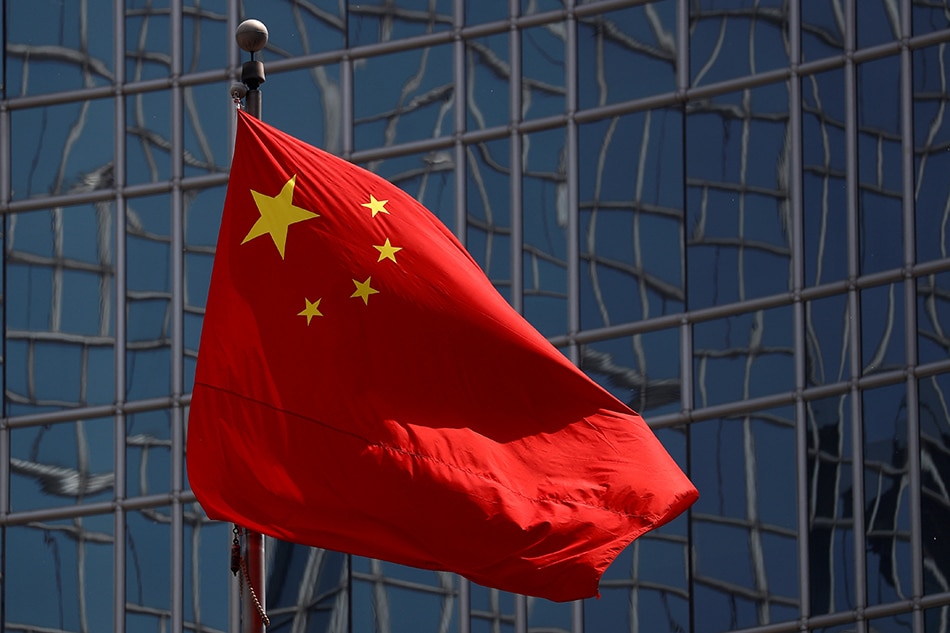China turns on its ‘artificial sun’ in quest for nuclear fusion energy | ABS-CBN

Welcome, Kapamilya! We use cookies to improve your browsing experience. Continuing to use this site means you agree to our use of cookies. Tell me more!
China turns on its ‘artificial sun’ in quest for nuclear fusion energy
China turns on its ‘artificial sun’ in quest for nuclear fusion energy
William Zheng,
South China Morning Post
Published Dec 05, 2020 11:48 PM PHT
China on Friday made another step forward in its quest for clean energy through controlled nuclear fusion, as it commissioned its new “artificial sun” – a new generation nuclear fusion reactor research facility which operates at a temperature 10 times as hot as the sun.
China on Friday made another step forward in its quest for clean energy through controlled nuclear fusion, as it commissioned its new “artificial sun” – a new generation nuclear fusion reactor research facility which operates at a temperature 10 times as hot as the sun.
According to China National Nuclear Corporation (CNNC), the HL-2M Tokamak apparatus is able to operate at 150 million degrees Celsius – almost three times hotter than the previous version called HL-2A.
According to China National Nuclear Corporation (CNNC), the HL-2M Tokamak apparatus is able to operate at 150 million degrees Celsius – almost three times hotter than the previous version called HL-2A.
The ability to generate such ultra-high temperature is essential for the research of fusion process, replicating the way the sun produces energy using hydrogen and deuterium gases as fuels. The sun only operates at a temperature of 15 million degrees Celsius.
The ability to generate such ultra-high temperature is essential for the research of fusion process, replicating the way the sun produces energy using hydrogen and deuterium gases as fuels. The sun only operates at a temperature of 15 million degrees Celsius.
The International Thermonuclear Experimental Reactor (ITER), which is under construction in southern France, is designed also to operate at up to 150 million degrees Celsius (270 million Fahrenheit).
The International Thermonuclear Experimental Reactor (ITER), which is under construction in southern France, is designed also to operate at up to 150 million degrees Celsius (270 million Fahrenheit).
ADVERTISEMENT
The Korea Institute of Fusion Energy announced about a week ago that its reactor had succeeded in operating at 100 million degree Celsius for at least 20 seconds.
The Korea Institute of Fusion Energy announced about a week ago that its reactor had succeeded in operating at 100 million degree Celsius for at least 20 seconds.
Yang Qingwei, chief engineer of CNNC’s Institute of Fusion Science at the Southwest Institute of Physics, was quoted by Xinhua on Friday as saying that HL-2M can achieve magnetic plasma confinement time of up to 10 seconds.
Yang Qingwei, chief engineer of CNNC’s Institute of Fusion Science at the Southwest Institute of Physics, was quoted by Xinhua on Friday as saying that HL-2M can achieve magnetic plasma confinement time of up to 10 seconds.
“HL-2M is China’s largest artificial sun with the best parameters,” Xu Min, director of the institute, was quoted as saying.
“HL-2M is China’s largest artificial sun with the best parameters,” Xu Min, director of the institute, was quoted as saying.
The new facility also has three times the plasma volume and six times the plasma current intensity compared with HL-2A, and that will substantially improve the research and development of fusion generator technology in China, according to a statement by CNNC, which oversees the project.
The new facility also has three times the plasma volume and six times the plasma current intensity compared with HL-2A, and that will substantially improve the research and development of fusion generator technology in China, according to a statement by CNNC, which oversees the project.
Yang said the project would become “an important pillar” to ITER, of which China is a member along with the United States, India, Japan, Russia and South Korea.
Yang said the project would become “an important pillar” to ITER, of which China is a member along with the United States, India, Japan, Russia and South Korea.
ADVERTISEMENT
China aims to develop its fusion technology as it plans to build an experimental reactor as early as next year, build an industrial prototype by 2035 and go into large-scale commercial use by 2050.
China aims to develop its fusion technology as it plans to build an experimental reactor as early as next year, build an industrial prototype by 2035 and go into large-scale commercial use by 2050.
Beijing released in November a national technology development blueprint committing to achieve breakthroughs in key and core technologies including artificial intelligence, aerospace science and deep Earth and ocean exploration.
Beijing released in November a national technology development blueprint committing to achieve breakthroughs in key and core technologies including artificial intelligence, aerospace science and deep Earth and ocean exploration.
High above the atmosphere, its Chang’e 5 spacecraft on Thursday had lifted 2kg (4.4lbs) of lunar dust and rocks from the Moon to bring back to Earth, while its Tianwen-1 Mars probe spacecraft is expected to arrive at the Red Planet within three months.
High above the atmosphere, its Chang’e 5 spacecraft on Thursday had lifted 2kg (4.4lbs) of lunar dust and rocks from the Moon to bring back to Earth, while its Tianwen-1 Mars probe spacecraft is expected to arrive at the Red Planet within three months.
RELATED VIDEO:
Read More:
South China Morning Post
SCMP
China
China artificial sun
nuclear fusion reaction China
HL-2M Tokamak apparatus
nuclear energy
ADVERTISEMENT
ADVERTISEMENT


